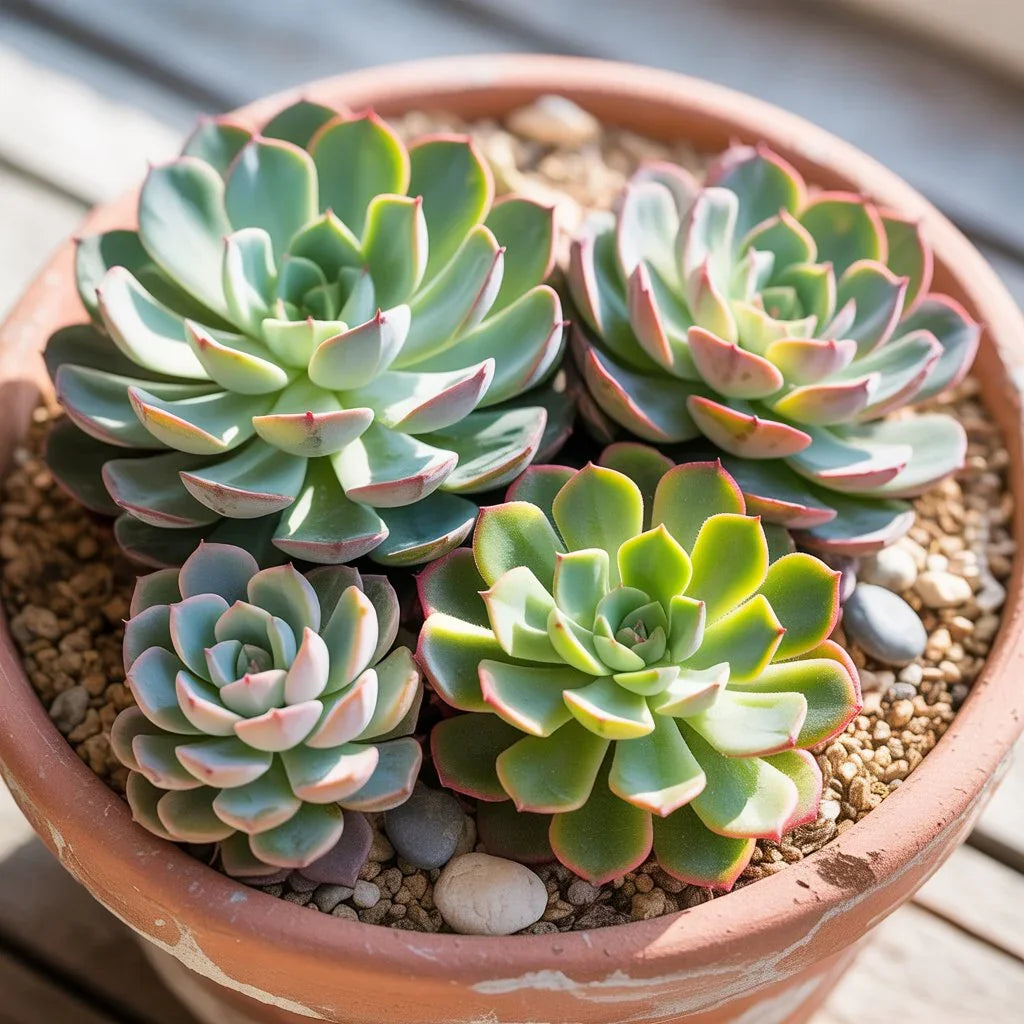
Succulent Care Guide: Soil, Watering, and Sunlight Tips for Thriving Plants
Share
Succulents are more than trendy décor — they’re living sculptures that bring calm and beauty to any space. Their resilience makes them perfect for busy city living, yet they still need thoughtful care to stay vibrant. Over years of working with plants in Manhattan, I’ve learned that proper soil, watering, and sunlight are the key to keeping succulents healthy indoors or outdoors. This guide breaks down everything you need to know about caring for succulents so they flourish in your home or garden.
What Makes Succulent Care Unique?
Unlike most houseplants, succulents store water in their leaves and stems, allowing them to survive dry conditions. This trait means they require less frequent watering and thrive in soils that drain quickly. Understanding these differences ensures you care for them in a way that supports their natural growth patterns.
Best Soil for Succulents
The right soil is the foundation for healthy succulents. Standard potting soil holds too much moisture and can cause root rot. Instead, aim for a gritty, fast-draining mix.
Ingredients for Ideal Succulent Soil
Sand or Perlite
Improves drainage and prevents compaction.
Cactus Mix or Light Potting Soil
Provides structure without holding excess water.
Compost or Coco Coir (Optional)
Adds nutrients while maintaining light texture.
DIY Succulent Soil Mix
Combine 2 parts cactus mix, 1 part coarse sand, and 1 part perlite for a balanced blend that mimics desert conditions.
How to Water Succulents Properly
The Soak-and-Dry Method
-
Water deeply until excess drains from the bottom.
-
Allow soil to dry completely before watering again.
-
Frequency: every 1–2 weeks indoors; weekly outdoors during summer.
Seasonal Adjustments
Spring/Summer (active growth)
Increase watering frequency slightly
Fall/Winter (dormancy)
Water sparingly — once a month or less.
Signs You’re Overwatering or Underwatering
Overwatered
Mushy leaves, yellowing, root rot.
Underwatered
Wrinkled, shriveled leaves.
Sunlight Needs for Succulents
Succulents love light, but not all need full sun.
Indoor Sunlight Tips
-
Place near south or east-facing windows for 4–6 hours of indirect sunlight.
-
Rotate pots weekly to prevent leaning toward light.
-
Supplement with grow lights in darker apartments.
Outdoor Sunlight Tips
-
Gradually acclimate succulents to direct sun to avoid sunburn.
-
Provide partial shade during peak summer heat.
-
Move potted succulents indoors before frost in cooler climates.
Temperature and Humidity
-
Ideal temperature: 60–80°F during the day, slightly cooler at night.
-
Avoid placing succulents near heating vents or air conditioners.
-
Low humidity environments mimic their native desert habitats — avoid misting.
Fertilizing Succulents
Succulents don’t need heavy feeding, but occasional fertilizer encourages vibrant growth.
-
Use a balanced, water-soluble fertilizer diluted to half strength.
-
Apply once every 6–8 weeks during spring and summer.
-
Skip fertilizing during winter dormancy.
Common Succulent Care Problems (and Fixes)
1. Root Rot
Cause: Overwatering or poor soil drainage.
Fix: Remove damaged roots, repot in fresh, dry soil.
2. Etiolation (Stretching)
Cause: Insufficient light.
Fix: Move plant to brighter location or use grow lights.
3. Pest Infestations
Cause: Mealybugs, aphids, or scale insects.
Fix: Wipe with rubbing alcohol or treat with neem oil spray.
4. Leaf Drop or Shriveling
Cause: Irregular watering or sudden temperature changes.
Fix: Adjust watering schedule; move away from drafts or heat sources.
Indoor vs. Outdoor Succulent Care
Indoor
Focus on light access and avoid overwatering; rotate regularly for balanced growth.
Outdoor
Protect from heavy rain and frost; use containers with drainage holes for mobility.
Propagation Tips (Quick Overview)
Caring for succulents naturally leads to propagation. Healthy leaves or stem cuttings can grow into new plants:
-
Let cuttings callous for 1–2 days.
-
Place on well-draining soil and mist lightly.
-
Wait for roots to develop before transplanting.
(For full propagation techniques, see our guide: “Succulent Propagation Techniques.”)
Why Proper Care Matters
Succulents may be low-maintenance, but proper care brings out their best colors, shapes, and blooms. Thoughtful watering, the right soil mix, and ideal light conditions turn simple plants into living art pieces that last for years.
Ready to Grow Thriving Succulents?
With the right care, succulents become more than décor — they’re companions that evolve with you. Whether you’re tending a windowsill arrangement or designing a rock garden, proper soil, watering, and sunlight unlock their full beauty.
Find premium succulents and expert care advice at Black Petals or visit our Manhattan shop at 1121 1st Ave for same-day delivery.
